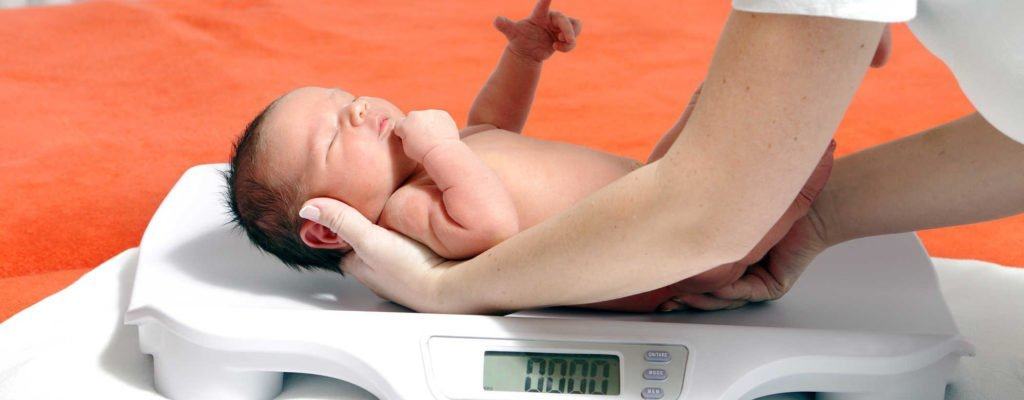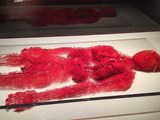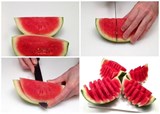Ways to determine an infants caloric needs

Learn how to determine your baby’s caloric needs, including the calories in breast milk and formula, to ensure your infant gets the right nutrition for healthy growth.
For the first time as a parent, you must be nervous and looking forward to meeting your baby. When holding your baby in your lap, you will realize that your baby is okay through a number of signs. Join aFamilyToday Health to follow these shares to understand more about the characteristics of your new baby.
When you watch TV, you will find the birth scene is very simple. After a few mother's moans, a lovely baby will appear in her arms. However, in reality it is not so, newborn babies are often crumpled, thin, pale and full of blood.
Do not be too surprised by this because when still in the womb, the baby mainly lives in a water-wide environment and is confined in a cramped space. Besides, in the process of giving birth, the baby also had to go through great difficulties to come to this world. There are even many difficult cases to deliver, doctors have to use tongs to take the baby out. However, this appearance is only temporary. In the eyes of parents, my baby is always the cutest and most adorable.
When will you be hugging your baby? This depends on the way of birth, your condition and your baby's condition. If you have a normal delivery and have no complications after giving birth, you have a chance to hold your baby for a few minutes after giving birth.
The first hour after birth, most babies are awake. This is a great time for you and your baby to get to know each other and begin to form a bond. However, if you are faced with difficult situations that make you miss this encounter, don't be sad. You and your baby still have a lot of time to be together and this will not affect your health or the relationship between you and your baby. The first few weeks, you will see the baby's hands are often clenched, the limbs are in a bent position like in the fetus. Babies born prematurely have differences in posture, activity and behavior compared to term babies.
Young children are born with certain instincts. These reflexes will disappear as the baby gets older.
Sucking and sucking reflex: The baby will do the suck when anything touches the baby's mouth.
Catching reflex: When you place your finger or other objects in the palm of the baby's hand, the baby will automatically clench.
Startled reflex: Suddenly swing your arms and legs, then quickly pull back and burst into tears when there is a loud noise, sudden movement or other sudden stimuli.
Also, since your baby's nervous system is still developing, your baby will have some other reflexes, especially when the baby is crying or agitated.
The baby will sleep most of the time in the first few weeks. Some pain relievers and anesthetics are used during labor to make the baby sleepy for the first or second day.
Respiration is a problem many parents are concerned about, especially as sudden infant death syndrome (SIDS) increases. When the baby is awake, he will breathe about 60 times / minute, especially when he feels excited or crying. Your baby may also stop breathing for 5-10 seconds and then breathe again. This usually happens while the baby sleeps. However, if your baby suddenly turns pale or stops breathing longer, take him to the hospital immediately.
Even though your baby is still unable to speak, he will make some sounds other than crying. Nasal congestion and hiccups are also common problems. However, it is not a symptom of infection, allergies or digestive problems.
At birth, the baby's head will come first. Therefore, the baby's head is often easily affected during birth. Your baby's skull is made up of soft bones to help him move through the birth canal.
If the baby is born normally, the baby's head appears slightly distorted or pointed forward, especially in the case of the baby being born with aspiration or a forcep clip. However, this does not affect the baby's health. During development, the baby's head will become more rounded. If a caesarean, the baby will not have this problem.
The top of the baby's head has a part of the bone that is not fully closed, called the tip of the head or the crown of the head. Many people think that the tip of the head has only one part, but it actually has 2 parts. The anterior cone is rhombohedral, from 2.5 to 7.5cm wide, and is the gap between the frontal bone and the crown bone. The smaller posterior part, triangular in shape, is the gap between the parietal bone and the occipital bone (which is a skull bone and is the main bone of the occipital - posterior and lower part of the skull).
Every time the baby cries, the squeeze still sticks out. This is completely normal, parents don't need to worry. The anterior tenderness will close after about 12-18 months, and the latter will close after 6 months.
The baby's head is also affected by a number of other effects during the birth process. Scalp edema (Caput succedaneum) is swelling on the scalp. In addition, your baby may bruise or change color on a swollen scalp. The cause of scalp edema is usually caused by pressure from the uterus or vagina when the head comes out first. Don't worry, this situation should go away after a few days.
This is also a common problem in newborn babies. You can see the blood accumulating under the periosteum (periosteal is a protective membrane, helping to protect the baby's skull). A few hours after birth, you may notice this phenomenon appear on your baby's head.
In most cases, this is not a dangerous condition and should go away after a few weeks or months. The hematoma will be absorbed back into the body and cause the blood tumor to disappear. However, if the blood tumor is too large, the first hemangioma can lead to jaundice.
Don't worry too much, both of these symptoms are damage to the outside of the skull, so it won't affect your baby's brain too much.
Your baby's face may be swollen due to the effects of the birth process. After a few days, your baby's face will have a lot of changes when excess fluid that is accumulated in the womb is removed. That is why the pictures of babies taken after a few days are often very different from the pictures taken at birth.
Sometimes, your baby's facial features will be deformed by pressure from the birth process. However, do not worry too much because everything will return to normal in a few days.
A few minutes after birth, your baby will open his eyes to observe the world around him. Your baby can still see, but can't focus on one point for too long. So your baby's eyes look like a straight line for the first 2-3 months. Also, due to the swelling of the eyelids, some babies cannot open their eyes immediately.
When holding your baby, you can encourage your baby to open his eyes by taking advantage of the eye's movement reflex. Babies tend to have more eyes open when held upright.
Sometimes, you will see a baby's red eyes in both one or both eyes. This condition is called conjunctival hemorrhage , which occurs when blood leaks under the sheath of the eyeball due to trauma that occurs during labor. This is not a dangerous condition and does not affect too much of the baby's eyes.
For blacks and yellows, if the baby's eyes are brown at birth, they will keep this color to large. For whites, most babies at birth will have a bluish-gray eye color, but this color will darken and reach a permanent eye color after 6 months.
Like other organs, a baby's ears can be distorted while in the uterus or during labor. In addition, the baby has not yet developed cartilage thick enough to help shape the ear frame like an adult. Therefore, if the baby's ears are temporarily folded or deformed, it is not abnormal. The mother should pay attention to stroke the baby's ears often so that the baby has beautiful ears.
Infants tend to breathe through their nose and nose is quite narrow. So a small amount of fluid or mucus in the nose can cause your baby to breathe loudly or block sounds even if he doesn't have the flu. Ask your doctor about daily saline drops and clean your baby's nose with a cotton swab to remove any dirt inside the nose.
Sneezing is also quite common in babies. This is a normal reflex and is not a sign of infection, allergy ...
When your baby opens his mouth or yawns, you'll see tiny, white pearly spots appear on the palate. This condition is known as Epstein's pearls. These spots are not dangerous and usually go away within a few weeks.
A newborn baby's neck is usually short because it is hidden behind the plump cheeks and folds of the skin.
The baby's chest wall is quite thin, so you will easily feel your baby's heartbeat. This is completely normal and should not be of concern.
Some babies, both boys and girls, have abnormal breasts. This is because the baby has been exposed to the hormone estrogen from the mother during pregnancy. You will also feel soft, disc-shaped tissues under your nipples and sometimes milk will drain. These will slowly disappear so you have nothing to worry about. However, you should not arbitrarily press the baby's chest according to your preference.
After the baby is born, you will find that your baby tends to clasp his hands tightly and has difficulty removing his fingers. When objects are placed in the baby's palm, this reflex will be strongly stimulated. Elbows, hips, and knees are folded, arms and legs raised. This position is similar to when the baby was in the womb.
At birth, your baby's nails may be long enough to scratch the baby's face. If so, cut your baby's nails with a small forceps.
Most babies' tummy is big and round. When your baby is crying or stressed, you may also see the skin in the middle of the abdomen rising between the muscle tissue bands. This should go away after a few months.
The problem of caring for the umbilical cord for the baby also makes many people worried. The umbilical cord contains three blood vessels (two arteries and a vein). After the baby is born, the umbilical cord will be clamped and cut to form an angle of the umbilical cord on the baby's abdomen. Usually, the umbilical cord will dry out on its own and fall off in about 10 - 21 days.
Your doctor will instruct you to clean the umbilical area to prevent infection until the cord is dry and falling. Do not immerse your baby's entire navel in the bath water until the baby's navel is not falling. The umbilical cord will change from yellow to brown and black. If your baby's umbilical area is red, has a bad smell, and has a lot of secretions around the base of the umbilical cord, you should see your baby's doctor.
Umbilical hernia is a fairly common condition in infants, with a small part of the baby's intestines protruding through a hole in the abdomen. Umbilical hernia is not dangerous to the baby and can be intervened with surgery. There is a folk measure that many people apply such as taking a coin to place it on the position of the navel, using the umbilical bandage to fix the coin.
Why are the genitals of both boys and girls abnormally enlarged? This is due to a variety of factors such as fetal contact with maternal hormones, bruising and swelling of the genital tissue due to birth trauma, and natural development of the external genitalia.
Large lips can swell at birth. The skin on the labia can be smooth or wrinkled. Sometimes in the middle of the baby's labia a small piece of pink tissue bulges out, this is excess hymen tissue, it will indent in the labia as the baby's genitals develop.
Due to the influence of maternal hormones during pregnancy, the baby will discharge vaginal discharge or bleed in a few days. This is called menstruation, a completely normal symptom in young children. The reason is that after birth, hormone levels drop suddenly, causing the endometrium to fall. This situation did not last long, only a few days was over.
Membrane effusion (Hydrocele)
The scrotum (the skin pouch that sits below the penis and surrounds the testicles) is often swollen. The cause of this condition is usually a hydrocele. This happens when the abdomen and scrotum are not completely closed. Fluid from the abdomen will enter the testicular sac to form a large mass. This situation will go away after 3 - 6 months. If it lasts longer, you should take your baby to the doctor. In addition, a swollen scrotum can be caused by an inguinal hernia, a symptom that requires surgery.
Boys' testicles are often difficult to see when the scrotum is enlarged. When touched or exposed to the outside environment, the baby will feel uncomfortable. Boys often experience frequent penile spasms, especially while urinating.
More than 95% of newborns urinate within the first 24 hours. If you do not see your baby urinating, it is likely that your baby was urinating at birth. Sometimes a baby's first urination gets less attention.
Foreskin
You only need to use water to wash off smegma (the process of peeling skin cells from the skin of the penis and the inner layer of the foreskin). Don't try to forcefully slide the foreskin toward the abdomen.
The process of separating the foreskin and foreskin requires time, you should not push. When can foreskin be turned? This depends on the baby. It may be from the moment your baby is born, but this is very rare, it can take days, weeks, months, or even years.
At birth, your baby is covered with a lot of different fluids, but mostly amniotic fluid and mother's blood. The nurse will dry the baby to prevent the baby's body from falling in temperature as the moisture on the skin rapidly evaporates.
Babies are usually covered with a white wax layer called fetal sebum. This wax will be washed off when your baby is showered for the first time.
Your baby's skin color may surprise you. Baby's skin is mottled with age spots, many areas are pale and red because the blood circulation system in the baby's skin surface is not normally stable. Similarly, numbness and swelling of the extremities, hands, feet and lips are also common, especially when the child is in a cool environment.
When crying or having a bowel movement, your baby's skin may turn a burgundy or purplish-green color. Red spots, abrasions, bruises, and petechiae are also common on the face of the skin and many other parts of the body. These phenomena are caused by a compressive trauma to the birth canal or from the pressure of the maternity clips used to support childbirth. They heal and disappear a few weeks later.
Soft, fluffy hairs called fluff also appear on a baby's face, ears, and back. Much of this hair usually falls out of the uterus before the baby is born. Therefore, this undercoat is often seen in premature babies. However, these hairs will fall off within a few weeks.
Your baby's top layer of skin will flake off during the first 1-2 weeks. This is also completely normal and does not require any special skin care. Exfoliation can be seen in some babies, especially those born after the due date.
Not all babies are born with birthmarks. However, sometimes pink or red areas of skin are also seen and usually disappear during the first years of life. Most birthmarks usually appear on the back of the neck or on the bridge of the nose, eyelids, eyebrows or anywhere on the skin, especially babies with fair skin.
Dark-gray or blue-green birthmarks like ink stains appear on your back, buttocks or anywhere on the skin. These birthmarks almost disappear over a few years.
Strawberry or capillary hemangiomas are red spots caused by many blood vessels concentrated under the skin. These birthmarks may fade at birth, then spread, shrink, and disappear within the first 6 years.
Wine drops are large, flat, burgundy-colored birthmarks that do not go away on their own.
Shredded coffee milk color often appears on the skin of some babies. These birthmarks may also darken in color as the baby gets older. People usually don't care about them unless these birthmarks grow and have 6 or more birthmarks, as this could be a sign of a medical condition.
Common brown or black moles, called hypopigmentation, can also appear after birth or as your baby gets older. Large moles or abnormal appearance moles should be examined and treated by a doctor, as some also need to be removed.
Some rashes are not harmful on the skin, and may appear at birth or during the first few weeks. On the nose, the chin appears tiny, flat, yellow or white spots called whiteheads and will disappear within the first few weeks.
Rashes: Small, red, raised bumps often with a white or yellow "head", sometimes called newborn acne. Although the rash is more common on the face, it can also appear on other areas of the body. However, the disease is not dangerous and should go away after a few weeks of care.
Poisonous erythema: The name sounds scary, but in fact this disease does not pose a danger to the baby. The main symptom of toxic erythrasma is a red streak with a pale yellow or pale yellow swelling in the middle, making the spot look like a honeycomb. The disease usually develops intensely in the first day or two after birth and disappears within a week.
Benign hyperpigmentation pustules are a newborn rash characterized by bumps or dark brown blisters that are scattered on the neck, back, arms, legs, and soles of the feet. This usually resolves on its own without treatment. Also, don't be surprised if babies get finger blisters as the fetus can still latch on while in the womb.
Newborn jaundice is a disease that causes a baby's skin color and whites to turn yellow. This is a common illness and usually appears on 2 - 3 after birth and resolves on its own within 1-2 weeks. Jaundice is caused by an accumulation of bilirubin (an orange pigment, a waste product from normal breakdown of red blood cells) in the blood. The baby's liver is temporarily not fully developed. Therefore, this is one way to effectively expel these substances from the body. Jaundice is quite common, but if your baby has jaundice earlier than expected or the baby's pigmentation is more yellow than usual, the doctor will need to monitor the baby carefully.
The first days and weeks of life are a time of magic and joy for most parents. However, taking responsibility for taking care of this tiny being can sometimes be difficult, especially when you don't understand what your baby's behavior is like.
If you feel anxious or have any doubts about how to take care of your baby, you should not hesitate to consult your doctor, health care professional, family or friends who have experience in taking care of your baby. baby care.
Learn how to determine your baby’s caloric needs, including the calories in breast milk and formula, to ensure your infant gets the right nutrition for healthy growth.
Discover the top 5 smartest dog breeds in the world, including Border Collie, Poodle, German Shepherd, Golden Retriever, and Doberman Pinscher. Learn about their unique traits and why they are considered the most intelligent dogs.
Discover 7 nutritious and delicious ways to cook egg porridge for babies, including recipes with cheese, pumpkin, tomato, and more. Learn how to prepare baby-friendly egg porridge with our expert tips.
After a series of medical measures they obtained a complete human vascular system profile.
Watermelon is one of the fruits that many people love, not only cheap but also delicious, nutritious and refreshing in the summer. To get delicious watermelon pieces, show off your housewives, your artistic talents to cut beautiful pieces of watermelon.
aFamilyToday Health - The digestive system and body in each baby is different. Parents need to recognize notes to deal with when babies have a food allergy!
Babies need many factors for perfect development. aFamilyToday Health shares with parents things to keep in mind when babies are 8 weeks old so that parents can take care of their babies the best!
Babies need many factors for perfect development. aFamilyToday Health shares with parents things to keep in mind when babies are 18 weeks so that parents can take care of their babies the best!
Babies need many factors for perfect development. aFamilyToday Health shares with parents things to keep in mind when babies are 28 weeks old so that parents can take care of their babies the best!
Babies need many factors for perfect development. aFamilyToday Health shares with parents things to keep in mind when babies are 32 weeks old so that parents can take care of their babies the best!








